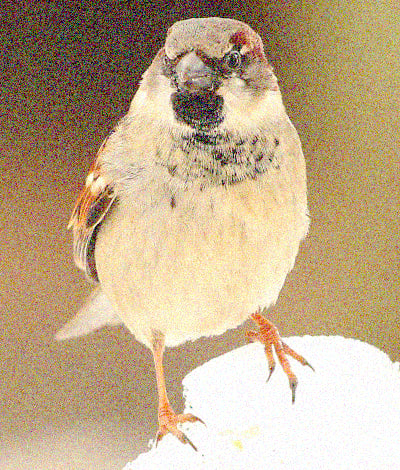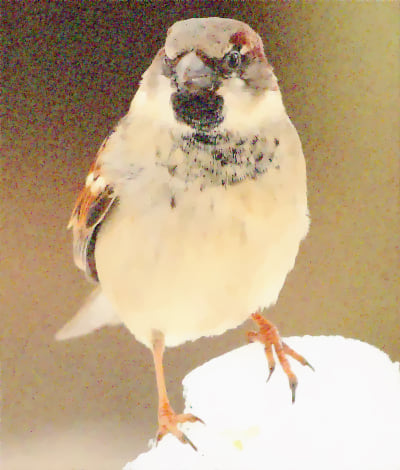4 releases (2 breaking)
| 0.3.1 | Aug 7, 2023 |
|---|---|
| 0.3.0 | Aug 7, 2023 |
| 0.2.10 | Aug 7, 2023 |
| 0.1.0 | Apr 18, 2022 |
#1368 in Math
22 downloads per month
785KB
639 lines
Image Recovery
Image recovery algorithms, implemented in Rust.
The solvers on this library are based on the algorithms presented in Chambolle, A. and Pock, T. (2011), with modifications inspired by Bredies, K. (2014).
Uses the image crate for loading and saving images, and the ndarray crate for manipulating matrices.
Only denoising algorithms is implemented so far, see the roadmap section for planned algorithm implementations.
How to use:
Declare the dependency in you Cargo.toml
[dependencies]
image-recovery = "0.2"
Examples:
Only the denoise solver is currently implemented. The examples for it can be found in the examples folder, and can be run with cargo run --example denoise. Furthermore, a quick example usage is shown below:
Image denoising (multichannel)
use image_recovery::{
image, // re-exported `image` crate
ImageArray, // struct for holding images
};
fn main() {
// the `image` crate provides functionality to decode images
let img = image::open("examples/source_images/angry_birb_noisy.png")
.expect("image could not be open")
.into_rgb8(); // the algorithms in this library are implemented for the Luma and Rgb types
// load the RGB image into an object which is composed
// of 3 matrices, one for each channel
let img_array = ImageArray::from(&img);
// choose inputs for the denoising solver:
// according to Chambolle, A. and Pock, T. (2011),
// tau and lambda should be chosen such that
// `tau * lambda * L2 norm^2 <= 1`
// while `L2 norm^2 <= 8`
// If we choose `tau * lambda * L2 norm^2 == 1`, then:
let tau: f64 = 1.0 / 2_f64.sqrt();
let sigma: f64 = 1_f64 / (8.0 * tau);
// lambda drives the dual objective function
// closer to zero results in a smoother output image
// closer to infinity results in an output closer to the input
let lambda: f64 = 0.0259624705;
// gamma is a variable used to update the internal
// state of the algorithm's variables, providing
// an accelerated method for convergence.
// Chambolle, A. and Pock, T. (2011), choose
// the value to be `0.35 * lambda`
let gamma: f64 = 0.35 * lambda;
// choose bounds for denoising solver
// the algorithm will run for at most `max_iter` iterations
let max_iter: u32 = 500;
// the algorithm will stop running if:
// `convergence_threshold < norm(current - previous) / norm(previous)`
// where `current` is the output candidate for the current iteration,
// and `previous` is the output candidate of the previous iteration.
let convergence_threshold = 10_f64.powi(-10);
// now we can call the denoising solver with the chosen variables
let denoised_array = image_array
.denoise(lambda, tau, sigma, gamma, max_iter, convergence_threshold)
.unwrap(); // will fail if image is 1 pixel in either x or y
// we convert the solution into an RGB image format
let denoised_img = denoised_array.into_rgb();
// encode it and save it to a file
new_img.save("examples/result_images/angry_birb_denoised.png")
.expect("image could not be saved");
}
This should provide the following result:
| Source image: | Output image: |
|---|---|
 |
 |
Testing
Tests can be run with cargo test. Unittests and Doc-tests are provided.
Note that the Doc-test in src/lib.rs will run very slowly in debug mode, it is recommended to run tests in release mode: cargo test --release.
Benchmarking
Benchmarking can be run with cargo bench.
Roadmap
Image recovery algorithms to implement:
- Denoising
- Zooming
- Deblurring
- Dequantization
- Inpainting
- Compressive imaging
Copyright
This code is licensed under the GNU Affero General Public License version 3 or later. See LICENSE or gnu.org/licenses/agpl-3.0.en.html.
Acknowledgements
Code by Lílian Ferreira de Freitas, mathematics by Emilia L. K. Blåsten
Dependencies
~7MB
~98K SLoC